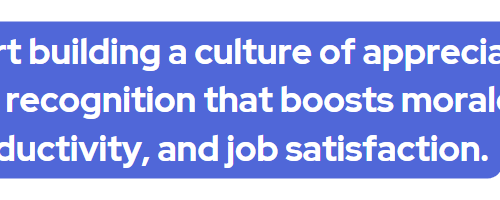In the ever-evolving landscape of work culture, the 9-day fortnight has emerged as a beacon of work-life balance. This innovative work schedule, which involves employees working nine days over a two-week period, is gaining traction in the UK and beyond. At SkyHR, we’re delving into how this schedule can revolutionise the workplace.
Understanding the 9-Day Fortnight
The 9-day fortnight represents a significant shift from the traditional 5-day work week. Essentially, it involves employees working their usual hours but condensed into nine days over a two-week period, typically resulting in an extra day off every other week. This innovative schedule is not just a modern fad but a thoughtful response to the evolving needs of the workforce and the changing nature of work itself.
Historically, the concept of the 9-day fortnight has been around for several decades, often used as a tool to manage economic downturns by reducing the working hours without laying off staff. However, its recent resurgence is driven by a different motive – the pursuit of a better work-life balance. In today’s fast-paced world, where the boundaries between work and personal life are increasingly blurred, the 9-day fortnight offers a structured approach to reclaiming personal time.
The structure of a 9-day fortnight can vary between organisations. The most common model is for employees to work eight days at their regular hours and one day with extended hours over a two-week period, culminating in a day off that typically falls on a Friday. This schedule not only provides employees with regular extended weekends but also encourages more focused and efficient work during the working days.
The adoption of this schedule reflects a broader trend in the UK and globally towards more flexible work arrangements. In a post-pandemic world where remote work and work-from-home options have become more normalised, the 9-day fortnight is another step towards accommodating diverse working preferences and lifestyles. It acknowledges that employees have lives outside of work, and that respecting this can actually enhance productivity and job satisfaction.
Moreover, the 9-day fortnight aligns with environmental and sustainability goals. By reducing the number of commuting days, it contributes to decreased traffic congestion and lower carbon emissions, making it a socially responsible choice for environmentally conscious businesses.
Benefits of a 9-Day Fortnight
The implementation of a 9-day fortnight work schedule brings a multitude of benefits, not only to employees but also to the organisations that adopt this innovative approach.
- Enhanced Work-Life Balance
- The most significant advantage is the improved work-life balance for employees. The extra day off every other week allows employees more time for personal pursuits, family obligations, or simply to rest and rejuvenate. This leads to reduced burnout and better overall mental health, which is crucial in today’s high-stress work environments.
- Increased Productivity and Efficiency
- Contrary to what might be expected, compressing work hours into fewer days can lead to increased productivity. With a longer weekend in sight, employees often become more focused and efficient during their working days. This heightened productivity benefits the organisation in terms of output and quality of work.
- Environmental Benefits
- A 9-day fortnight contributes to environmental sustainability. With employees commuting less frequently, there is a notable reduction in traffic congestion and pollution. This reduction in carbon footprint aligns with the growing emphasis on corporate social responsibility and environmental stewardship.
- Employee Attraction and Retention
- Offering a 9-day fortnight can make an organisation more attractive to potential employees. In a competitive job market, flexible work arrangements are a significant draw. Additionally, current employees are more likely to stay with an employer that values their work-life balance, leading to reduced turnover and associated costs.
- Healthier Workplace Environment
- Regular extended breaks can lead to a healthier workplace environment. Employees return to work more refreshed and motivated, which can foster a more positive and collaborative work culture.
- Reduced Operational Costs
- For organisations, a 9-day fortnight can lead to cost savings. With one less day of full operation every two weeks, there can be reductions in operational costs such as utilities and office supplies.
- Adaptability and Resilience
- Implementing a 9-day fortnight can increase an organisation’s adaptability. By embracing flexible working patterns, companies demonstrate their ability to evolve with changing times, which is crucial for long-term sustainability and resilience.
In conclusion, the 9-day fortnight is not just a benefit for employees in terms of their personal life and well-being, but it also offers significant advantages for the organisation in terms of productivity, environmental impact, and overall company culture. It’s a progressive step that aligns with modern workplace trends and employee expectations, making it an attractive option for both employers and employees.
Challenges and Considerations
While the 9-day fortnight offers numerous benefits, it also presents several challenges and considerations that organisations must carefully navigate to ensure a successful implementation.
- Managing Workload and Productivity
- The primary challenge is ensuring that the condensed work schedule does not negatively impact workload management and overall productivity. Companies need to carefully assess whether their operations and employee roles are suitable for this schedule. There may be a need for adjustments in work practices, such as more efficient meeting scheduling and prioritisation of tasks.
- Client Service and Business Operations
- Organisations must consider the potential impact on client service and business continuity. In sectors where constant availability is crucial, a 9-day fortnight might require rotational schedules to ensure that the business remains fully operational and responsive to client needs at all times.
- Legal and Contractual Considerations
- In the UK, implementing a 9-day fortnight may involve navigating various legal and contractual issues. This includes amendments to employment contracts, compliance with the Working Time Regulations 1998, and ensuring that all changes are in line with employment law. It’s advisable to seek legal counsel to navigate these complexities.
- Communication and Employee Buy-In
- Effective communication with all stakeholders is vital. Clear and transparent dialogue about the changes, along with addressing any concerns, is essential for gaining employee buy-in. It’s important to highlight the benefits while also acknowledging the adjustments required.
- Equity and Fairness
- Implementing a 9-day fortnight must be done equitably to avoid any perception of unfairness amongst staff. Organisations need to ensure that all employees, regardless of their role or level, have equal access to the benefits of this schedule, where feasible.
- Training and Support
- Employees and managers may require training and support to adapt to the new schedule. This includes time management training, stress management resources, and support in adjusting to a different work rhythm.
- Monitoring and Feedback
- Once implemented, it’s crucial to continuously monitor the impact of the 9-day fortnight on various aspects of the business. Regular feedback from employees and clients can provide insights into how the new schedule is functioning and where adjustments may be needed.
- Flexibility and Adaptability
- The 9-day fortnight may not be suitable for everyone. Organisations should be prepared to offer flexibility and consider alternative arrangements for those who may not thrive under this system due to personal or professional reasons.
In summary, while the transition to a 9-day fortnight can be beneficial, it requires careful planning, open communication, and a willingness to adapt and modify the approach as needed. By addressing these challenges head-on, organisations can ensure a smoother implementation that benefits both the company and its employees.
Implementation Strategies
Successfully implementing a 9-day fortnight schedule requires strategic planning and thoughtful execution. Here are key strategies that can facilitate this transition:
- Assessing Organisational Readiness and Employee Interest
- Begin with a thorough assessment of your organisation’s readiness for this change. Evaluate the nature of work, employee roles, and operational requirements to determine feasibility. Conduct surveys or hold focus groups to gauge employee interest and gather input. This preliminary step is crucial for tailoring the implementation to the specific needs and capacities of your organisation.
- Developing a Clear Implementation Plan
- Create a detailed plan outlining how the 9-day fortnight will be rolled out. This plan should include a timeline, a clear description of the new working pattern, and guidelines on how work will be managed. It’s important to set realistic goals and establish benchmarks to measure the success of the implementation.
- Legal and Policy Considerations
- Ensure compliance with UK employment laws and regulations. This may involve revising employment contracts, updating company policies, and ensuring that the new schedule adheres to the Working Time Regulations. Consult with legal experts to navigate these aspects effectively.
- Effective Communication and Training
- Clear and ongoing communication is essential. Inform all employees about the change, its rationale, and its benefits. Document your policies, and provide training and support to help them adjust to the new schedule. This includes training for managers on how to effectively oversee teams working a 9-day fortnight.
- Pilot Program and Feedback Loop
- Consider starting with a pilot program in a department or team. This allows you to test the schedule and make necessary adjustments before a company-wide rollout. Establish a feedback loop where employees can share their experiences and offer suggestions for improvement.
- Technology and Tools Support
- Leverage technology to support the new work schedule. HR software, like SkyHR, can be instrumental in scheduling, tracking hours, and managing workload. Ensure that employees have the tools and resources needed to work efficiently.
- Monitoring and Evaluation
- Regularly monitor the impact of the new schedule on productivity, employee well-being, and business outcomes. Use performance metrics, employee surveys, and feedback to evaluate the effectiveness of the 9-day fortnight and make informed adjustments.
- Flexibility and Customisation
- Recognise that one size does not fit all. Be prepared to customise the schedule for different departments or roles as needed. Maintain flexibility to accommodate individual employee needs where possible.
- Continuous Improvement
- Treat the implementation as an ongoing process. Continuously look for ways to improve and refine the schedule based on feedback and performance data. This approach will help in adapting to evolving business and employee needs.
By following these strategies, organisations can effectively implement a 9-day fortnight, ensuring a smooth transition that aligns with both business objectives and employee well-being.
The Future of Work and Flexible Schedules
The concept of the 9-day fortnight is part of a broader evolution in the world of work, where flexible schedules are becoming increasingly prominent. This shift reflects changing attitudes towards work-life balance, employee well-being, and organisational efficiency.
- Evolving Workforce Expectations
- Modern employees increasingly seek work environments that offer flexibility and autonomy. The rise of digital technologies has facilitated this shift, enabling remote and flexible work arrangements. The 9-day fortnight is an example of how organisations can meet these evolving expectations, demonstrating a commitment to accommodating diverse lifestyle needs and work preferences.
- Technological Advancements
- Advancements in technology play a pivotal role in supporting flexible work schedules. Cloud computing, collaborative software, and mobile technology enable employees to work efficiently, irrespective of their physical location. This technological infrastructure is essential for the successful implementation of schedules like the 9-day fortnight.
- Impact on Corporate Culture
- Adopting flexible schedules can profoundly impact corporate culture. It signals a shift towards a more trust-based, results-oriented work environment. Companies that embrace these changes are often seen as progressive and employee-centric, which can enhance their reputation and attractiveness as employers.
- Global and Environmental Implications
- Flexible work schedules have significant global and environmental implications. Reduced commuting times contribute to lower carbon emissions, aligning with broader sustainability goals. Additionally, the ability to work flexibly can facilitate a better balance between global business demands and local work preferences.
- Challenges in Adaptation
- While the trend towards flexibility is clear, it also presents challenges. Organisations must find the right balance between flexibility and maintaining effective collaboration and company culture. There is a need for ongoing innovation in management practices and communication strategies to support these new ways of working.
- Role of HR Software in Supporting Flexibility
- HR software, like SkyHR, plays a crucial role in supporting flexible work arrangements. These tools can help manage schedules, track productivity, and maintain employee engagement, making them indispensable in the modern workplace.
- Looking Ahead
- As we look to the future, it’s evident that flexible work schedules, like the 9-day fortnight, will become more common. Organisations that adapt to these changes proactively will be better positioned to attract and retain top talent, maintain high levels of employee satisfaction, and remain competitive in a rapidly changing business landscape.
Conclusion
The exploration of the 9-day fortnight has uncovered a multitude of facets that make this innovative work schedule a viable and attractive option in today’s evolving work environment. As we have seen, the benefits of such a flexible arrangement extend far beyond simply offering employees an extra day off; it touches on improved work-life balance, increased productivity, environmental sustainability, and the overall well-being of the workforce.
However, the transition to a 9-day fortnight is not without its challenges. It demands thoughtful consideration, meticulous planning, and a willingness to adapt and evolve. Organisations must navigate the complexities of workload management, legal considerations, and the potential impact on client service and business operations. But with effective strategies in place, these challenges can be successfully addressed, paving the way for a smoother implementation that is beneficial for both employers and employees.
Furthermore, the 9-day fortnight is emblematic of the future of work, a future that is increasingly leaning towards flexibility, employee-centric policies, and innovative work arrangements. This trend is not just a fleeting response to current demands but a long-term shift in the global work landscape. Companies that embrace this change and adapt to these evolving dynamics are likely to see enhanced employee engagement, improved productivity, and a stronger, more resilient organisational culture.
For HR software companies like SkyHR, the 9-day fortnight and other flexible working arrangements present an opportunity to showcase the pivotal role of technology in facilitating these changes. By providing tools that support flexible scheduling, workload management, and effective communication, SkyHR can help businesses navigate this transition smoothly, ensuring that the benefits of such innovative work schedules are fully realised.
In closing, the 9-day fortnight is more than just a new way to structure the workweek; it’s a reflection of a broader movement towards a more balanced, sustainable, and employee-focused work environment, and is just one of various patterns of compressed hours. As we continue to navigate the challenges of the modern workplace, it’s clear that flexibility and adaptability will be key to thriving in this new era. Organisations that recognise and act on this shift will not only foster a happier, more productive workforce but will also position themselves as leaders in the future of work.




